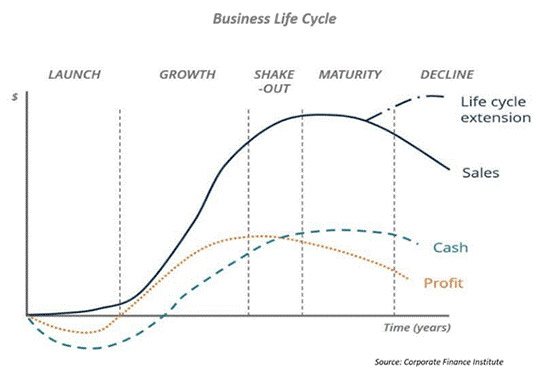What could be better than buying some stock, kicking back, and getting "a little something extra" every quarter from management after a good run?
Ordinarily, cash dividends are great. They can be the main reason to even buy shares.
But with the notable exception of the "marijuana REIT," Innovative Industrial Properties Inc. (NYSE: IIPR), the cannabis industry is a little different.
In cannabis right now, a dividend could conceivably be a red flag.
When you own part of a cannabis company, you own a piece of an industry that's set to grow faster than any other industry has for generations.
But that claim doesn't come with a cash payout... yet.
[mmpazkzone name="in-story" network="9794" site="307044" id="137008" type="4"]
It's All About Growth, Growth, Growth
Cannabis industry growth will come because the gap between legal and illegal marijuana sales spans hundreds of billions of dollars, and the legalization wave means revenue has to grow incredibly fast to fill it.
But filling the void between existing legal and illegal sales is not the sole driver of growth.
The Next American Aristocracy is expected to be fueled by today's cannabis boom. If you take advantage now, you could enjoy the kind of wealth "that lasts generations." Click here to see for yourself...
Legalization spurs the emergence of entirely new markets for cannabis products. And these will spring up faster than anyone thought possible.
Toss these new markets into the mix, and before you know it, total legal-market sales could exceed today's illegal sales by two to three times. Just keeping pace with the soaring demand for cannabis will drive the best companies' annual revenue growth past 80% for years to come.
And once you see all the moneymaking opportunities staring them in the face, you'll be glad to own a cannabis stock that doesn't cut you a dividend check...
Here's What Will Drive That Growth
Cannabis sales approached $350 billion last year, mostly from traditional marijuana, of which only about $20 billion were legal. Tapping into these existing illegal marijuana markets around the globe as they turn legal is just one of the many ways cannabis CEOs can launch profits.
High-growth profits will also come from the emerging medical marijuana market.
Marijuana for medical use is gaining wide acceptance both here and abroad, and public awareness of the powerful treatment possibilities of CBD grows daily. Given all the conditions that THC and CBD can treat, it's hard to overstate just how big this market could get.
In the United States alone, people spent $18 billion on over-the-counter pain medication in 2018. When you add in prescription-based opioid sales, those figures double. On a global basis, sales of pain medication could reach four times that number, and it's clear that sales of medical marijuana could displace much of that market.
Have 28 Seconds? You could make $2,353 - and you won't need to buy a single share of stock up front to collect this cash, or spend a nickel on anything. Click here to learn more...
Around the globe, over 1 billion people suffer from any of the 10 key medical conditions for which cannabis is being prescribed as a treatment. The 20% using it therapeutically makes for a market of 200 million patients that didn't buy marijuana before. And the cost to treat these conditions ranges from a few hundred bucks to tens of thousands of dollars.
So, spending an average of $1,000 each year to treat these conditions makes for another $200 billion market in and of itself.
To this, we can add the potential for patentable cannabinoid-based pharmaceutical drugs. Prescription drugs will make up a $1 trillion market by 2020, and we can expect customized cannabinoid compounds to soon start taking a sizeable chunk out of this profit-rich market.
And don't forget that I hailed 2019 as the "Year of CBD." Nutraceuticals, sports medicine, and health and beauty products will demand massive production of CBD. The 2018 Farm Bill and removal of CBD from the Controlled Substances Act has also created tremendous upside for CEOs doing whatever it takes to scale up their businesses.
But there is an unknown here, albeit an "all upside" unknown. No one really knows how many buyers the industry could attract once cannabis is legal at the federal level. Best estimates point to... quite a lot. Cannabis-infused edibles, beverages, vapes, and other methods of recreational use could develop into a massive market as marijuana goes mainstream.
Given how quickly things develop in cannabis, we'll know soon enough - and cannabis company executives know the cannabis market will swell far too big to waste precious capital on dividends.
That brings us to the crux of the issue.
Cannabis CEOs Need All the Cash They Can Possibly Get
Now, dividends matter to many investors. Whether they reinvest the money or spend it, the income received is critical to building wealth.
But the companies paying dividends don't do so out of regard for what the investor wants. To management, dividend policy represents a kind of capital-planning tool.
At their core, companies allocate capital. The good ones take the cash provided by investors or earned on their assets and decide how best to invest it.
The decision to pay a dividend comes down to how much return the company's leadership thinks they can generate by spending the cash on new projects and initiatives. When their cash outgrows profitable opportunities, a responsible company will either buy back shares or pay dividends.
But a dividend only makes sense for a company at a certain stage of growth.
Companies just getting off the ground or entering a period of rapid growth have much radically different cash needs than more mature firms.

As you can see in the graph above, "early" companies burn cash at a considerable pace, but profit growth accelerates quickly as sales take off.
Only when the market approaches saturation and competition squeezes margins do profits begin to taper. The companies that remain in a mature industry steadily build cash as the opportunities to profit dwindle or become less attractive.
MUST SEE: Watch this guy officially become $1,050 richer in 15 seconds... $940 richer in 11 seconds... $1,260 richer in eight seconds... and $988 richer in seven seconds! Then discover how you could do this all yourself. Click here...
It's at these later stages that companies begin to pay dividends. That's when cash is more useful in the hands of investors, and business reinvestment gets focused on efficiency improvement.
Cannabis markets are just entering a high-growth period of scaling up. The average cannabis CEO has too many profit opportunities staring them in the face; a dividend is strictly back-burner.
The truth is the more growth prospects a company has - and cannabis companies have plenty of growth prospects - the less likely it is to pay a dividend.
A good cannabis company looking to make the most of the tremendous revenue growth in front of it is taking all the money it has to invest heavily in its business.
Dividends will likely come, but we've got a period of massive, rapid growth to get through first. I expect patient investors will be handsomely rewarded.
We're Letting You In on a Secret Cannabis Investing Strategy
Less than a year ago, Wall Street opened up Cannabis Lots - but that's not something that anyone will be knocking down your door to tell you anytime soon.
That's why we've partnered with one of the top experts in this field to spill the details on this investing phenomenon - he's even been called America's No. 1 Pattern Trader!
Using his patented system, his data has shown more than 10 times larger payouts than ordinary stock trading.
To get this sort of profit power for yourself, check this presentation out now.
Follow Money Morning on Facebook and Twitter.
About the Author
Greg Miller started working on Wall Street in September, 1987, just a month before the “Black Monday” stock market crash.
During his career there, he became an expert in just about every kind of publicly traded security - from blue-chip and small-cap stocks to municipals, junk bonds, and derivatives. As a portfolio manager, Greg was responsible for over $500 million of assets in mutual funds and insurance company accounts.
After leaving the Street, he designed a successful options trading strategy and made lucrative tech investments for a financial publication. He has also helped develop new products and worked with other editors to hone their strategies. He’s always been dedicated to deep, fundamental research - and he always will be - because he believes buying the very best companies at the right price is the best way to amass wealth in the stock market.



